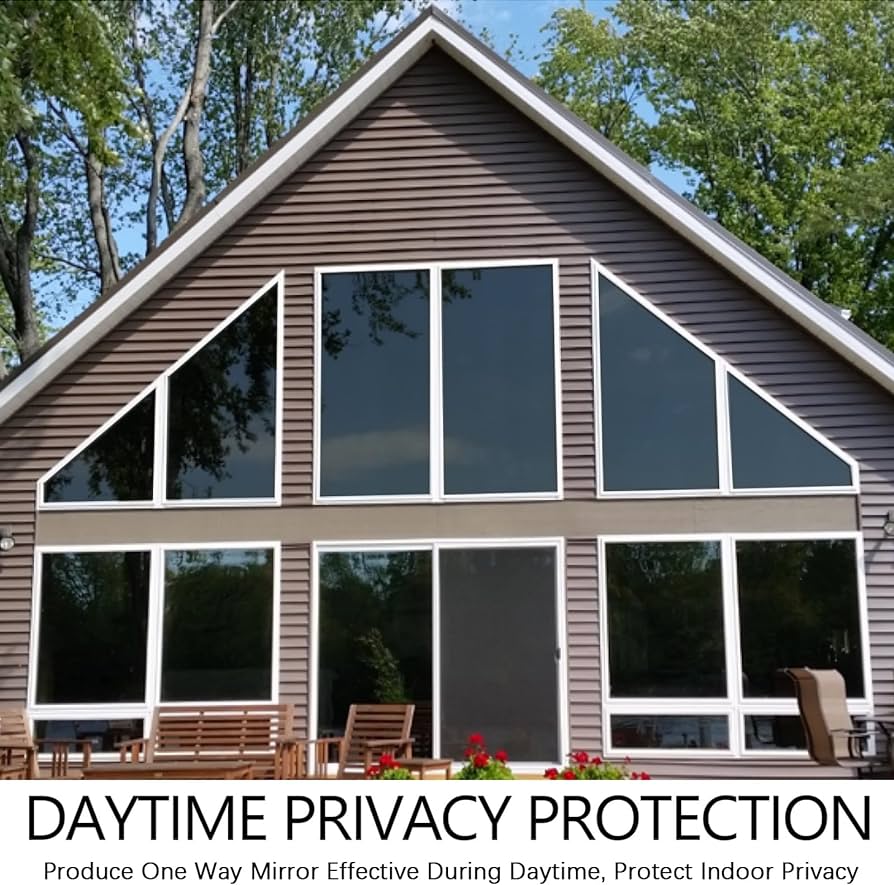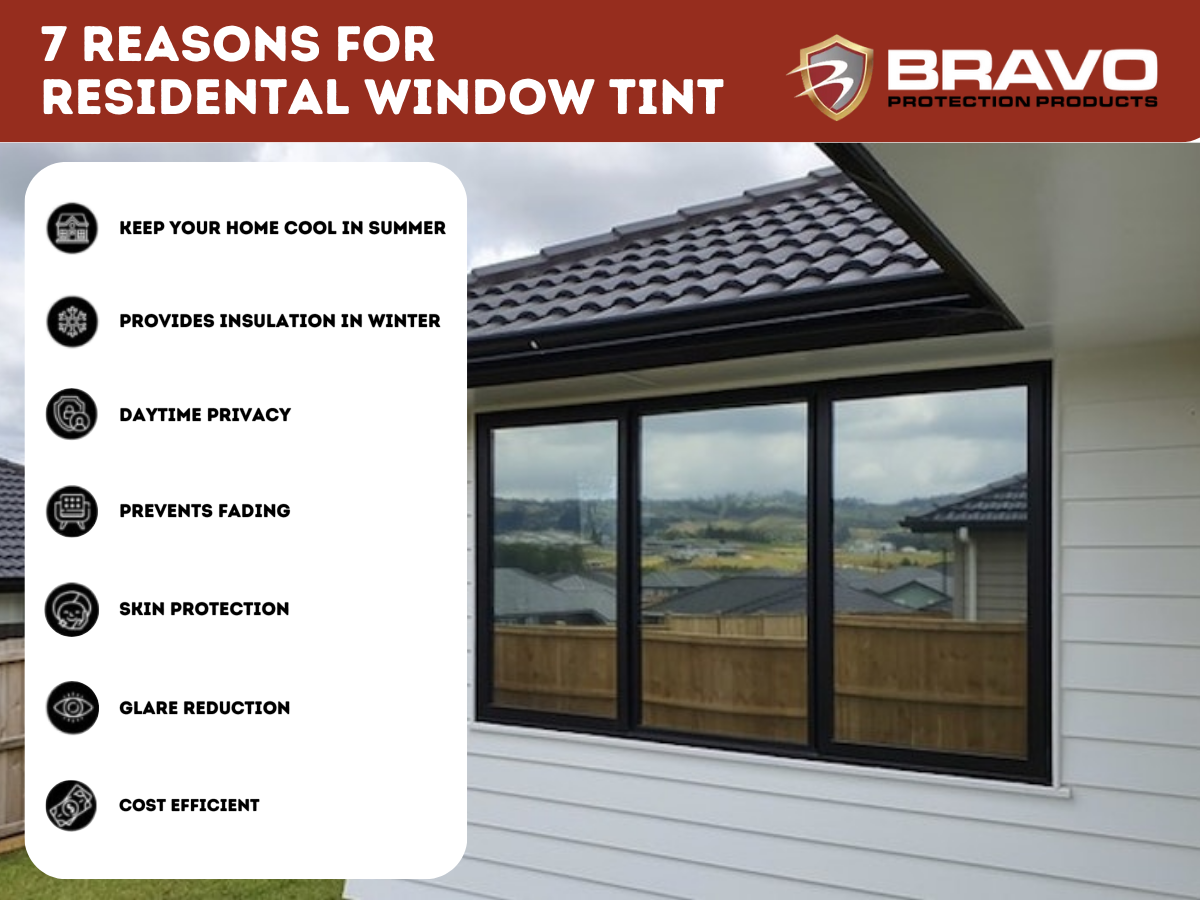How Residential Window Tint Can Minimize Power Bills
How Residential Window Tint Can Minimize Power Bills
Blog Article
Exactly How Residential Window Tinting Enhances Your Home's Energy Performance
Residential window tinting offers a compelling remedy for house owners seeking to improve energy effectiveness within their home. By using specialized movies to windows, it effectively minimizes heat transfer, consequently stabilizing interior temperature levels and decreasing the requirement for excessive heating or cooling. This not just reduces power intake but additionally provides a much more comfy environment by alleviating glow. Recognizing the nuances of exactly how tinting jobs and picking the appropriate type for your home can be essential. Oddly, what elements should one take into consideration prior to making this investment?
Understanding Window Tinting
Comprehending home window tinting is essential for property owners seeking to enhance both comfort and power effectiveness in their living rooms. Residential Window Tint. Home window tinting includes the application of a slim film to the interior or exterior surface of glass home windows. This movie can dramatically regulate the quantity of sunshine and warm that enters a home, thus influencing interior environment conditions
There are numerous types of home window tinting films available, each with unique residential properties. The efficiency of home window tinting is commonly measured by its Visible Light Transmission (VLT) percent, which suggests just how much light can pass with the movie.
Benefits of Power Effectiveness
Window tinting not just enhances aesthetics yet also plays a substantial function in boosting energy performance within domestic rooms. By decreasing warm transfer through windows, colored films develop a more steady interior climate, which can bring about significant decreases in power consumption for heating & cooling. This energy effectiveness converts into reduced energy bills, supplying homeowners with considerable lasting savings.

Additionally, home window tinting improves the comfort of living rooms. By lessening glare and obstructing unsafe UV rays, tinted windows develop a more positive atmosphere, which can result in boosted wellness for occupants. The defense against UV rays additionally assists preserve furnishings and flooring from fading, adding to the durability of household products.
How Tinting Functions
Tinting films operate via a combination of innovative materials and modern technologies created to control the quantity of solar energy going into a home. Primarily made up of polyester, these films typically include ceramic or metallic fragments that show and soak up heat. This twin capacity enables them to significantly reduce the penetration of ultraviolet (UV) rays and infrared radiation while allowing noticeable light to go through.
The performance of window tinting is determined by its solar warmth gain coefficient (SHGC), which indicates exactly how much solar power is transmitted with this page the home window. Reduced SHGC worths are more effective as they represent greater heat being rejected. In addition, window colors can feature a range of tones, permitting homeowners to personalize their visual choices while boosting power efficiency.
Moreover, these movies work as an obstacle, preventing heat loss during chillier months by showing indoor heat back right into the home. This thermal insulation effect complements the cooling benefits acquired during warmer months, adding to a balanced indoor climate year-round. By handling solar energy successfully, property home window tinting not just improves comfort however likewise plays a crucial function in minimizing energy usage and lowering utility bills.
Choosing the Right Color

There are different kinds of window films offered, consisting of colored, metalized, and ceramic. Colored films are economical yet may have limited longevity. Metalized films use far better heat being rejected yet can hinder electronic signals. Ceramic films supply superb heat control without compromising exposure and are very durable, making them a preferred choice.
Visible light transmission (VLT) is another important aspect, as it suggests the quantity of all-natural light that can pass via the colored glass. Home owners need to pick a color with a VLT that enhances their lights choices while still supplying appropriate glow reduction.
Furthermore, evaluating the solar warm gain coefficient (SHGC) can help identify how well a tint can obstruct warmth from sunshine. A reduced SHGC suggests much better heat control, ultimately boosting power performance.
Installment and Maintenance Tips
Appropriate installation and maintenance are essential elements in maximizing the benefits of household window tinting. Experts additionally utilize specialized methods and devices, which can enhance the sturdiness and effectiveness of the color.
Following setup, Discover More maintenance is necessary to lengthen the life of the home window movie. It is recommended to wait at least 30 days before cleaning the tinted windows to allow the sticky to treat completely.
In addition, normal examinations are beneficial. Look for any peeling or bubbling, which could indicate improper installation or wear over time - Residential Window Tint. Dealing with these issues promptly can avoid further damage and maintain power performance. By sticking to these setup and maintenance suggestions, property owners can ensure their home window tinting remains to supply significant energy cost savings and comfort for many years to find.
Conclusion
In conclusion, property window tinting serves as a reliable solution for improving power efficiency within homes. By minimizing heat transfer and blocking unsafe UV rays, window films add to decrease energy usage and boosted indoor comfort.
Home window tinting entails the application of a thin film to the interior or outside surface area of glass home windows. By reducing warm transfer with home windows, colored movies create a much more steady interior environment, which can lead to significant reductions in power usage for heating and cooling.The effectiveness of home window tinting is gauged by its solar heat gain coefficient (SHGC), which shows exactly how much solar my latest blog post energy is sent through the home window. By taking care of solar power efficiently, property home window tinting not just boosts convenience yet also plays a vital role in decreasing energy consumption and lowering utility bills.
By decreasing heat transfer and blocking damaging UV rays, window films add to decrease energy intake and boosted interior comfort.
Report this page